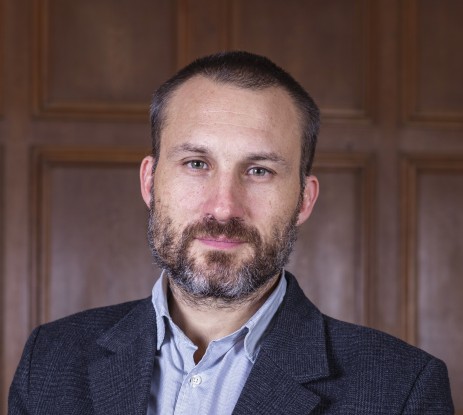Cosmic Nucleosynthesis in Binary Neutron-Star Merger Events
21.06.2021 von np
LOEWE cluster project at the Darmstadt Institute for Nuclear Physics
What happens when two neutron stars collide and thereby emit gravitational waves and produce heavy chemical elements? Physicists at the Institute for Nuclear Physics will investigate these questions in the collaborative research project “ELEMENTS” together with scientists from the Goethe University Frankfurt, from the University Gießen, and from the GSI Helmholtz Centre, Darmstadt. The project will be supported with funds of 8 Mio.€ from the Hessian Ministry for Science and the Arts and additional support by TU Darmstadt until April 2025 in preparation for the next German Excellence Initiative. Our institute‘s director, Prof. Dr. Norbert Pietralla, is one of the two spokespersons of ELEMENTS.
The project ELEMENTS unites the research competences of strong partners. Leading scientists with excellent research track records in the fields of gravity, astrophysics, nuclear matter, and nuclear reactions are joining their strengths and use the particle accelerator complexes at Darmstadt – in particular the heavy-ion accelerators at GSI/FAIR and the complementary electron accelerator SDALINAC at the Institute for Nuclear Physics – for their research in a synergetic manner. ELEMENTS aims additionally at filling a gap in the research landscape in the State of Hesse: Efforts are made to establish a new professorship for astronomical observation of neutron stars and binary neutron-star merger events at the partner universities.
ELEMENTS will study neutron stars, the still visable ‚little lighter brothers‘ of black holes. They are created on the burning-out of a star if it was not massive enough for collapsing then into a black hole under its own gravitational pressure. Neutron stars, just like black holes, are sources for extreme space-time deformations. Detectable gravitational waves are emitted when two neutron stars collide and merge in a catastrophic event. The production of the heavy elements occurs according to subsequent rapid neutron capture reactions on lighter nuclei and repeated nuclear fission processes, the r-process fission cycle. The debris from such star collisions includes freshly synthesized heavy chemical elements, such as gold, platinum or plutonium, and can be observed in astronomical surveys as kilonova events that change their colors in the night-sky from blue to red in a matter of a few days.
Binary neutron-star merger events are the only known objects in the Universe that are capable of producing the naturally observed abundance of heavy elements in the world. The team of scientists carrying the project ELEMENTS will investigate the dynamics of a binary neutron-star merger event. It will study the nuclear matter under the corresponding extreme conditions, the nuclear reactions that create the heavy elements, and their atomic structures under extreme conditions of strong electromagnetic fields that are responsible for the observations of visible signals of such cosmic events on Earth, which itself was predicted by scientists at the institute even before their first observations a few years ago.
ELEMENTS is part of the Profile Theme “Nuclear Science” within the research profile of TU Darmstadt.
Scientific Contact
TU Darmstadt, Institute for Nuclear Physics, Director and Spokesmen
Professor Dr. Dr. h.c. mult. Norbert Pietralla
Participating Scientists with affiliation to the Institue for Nuclear Physics:
Prof. Dr. Almudena Arcones, Theoretical Astrophysics
Dr. Michaela Arnold, Accelerator Physics
Prof. Dr. Thomas Aumann, Experimental Nuclear Structure
Prof. Dr. Jens Braun, Theoretical Nuclear Physics
Prof. Dr. Tetyana Galatyuk, Experimental Heavy-Ion Physics
Prof. Dr. Gabriel Martínez-Pinedo, Theoretical Nuclear Astrophysics
Prof. Dr. Guy D. Moore, Theoretical Nuclear Physics
Prof. Dr. Alexandre Obertelli, Experimental Nuclear Physics
Prof. Dr. Dr, h.c. mult. Norbert Pietralla, Experimental Physics
Prof. Achim Schwenk PhD., Theoretical Nuclear Physics


